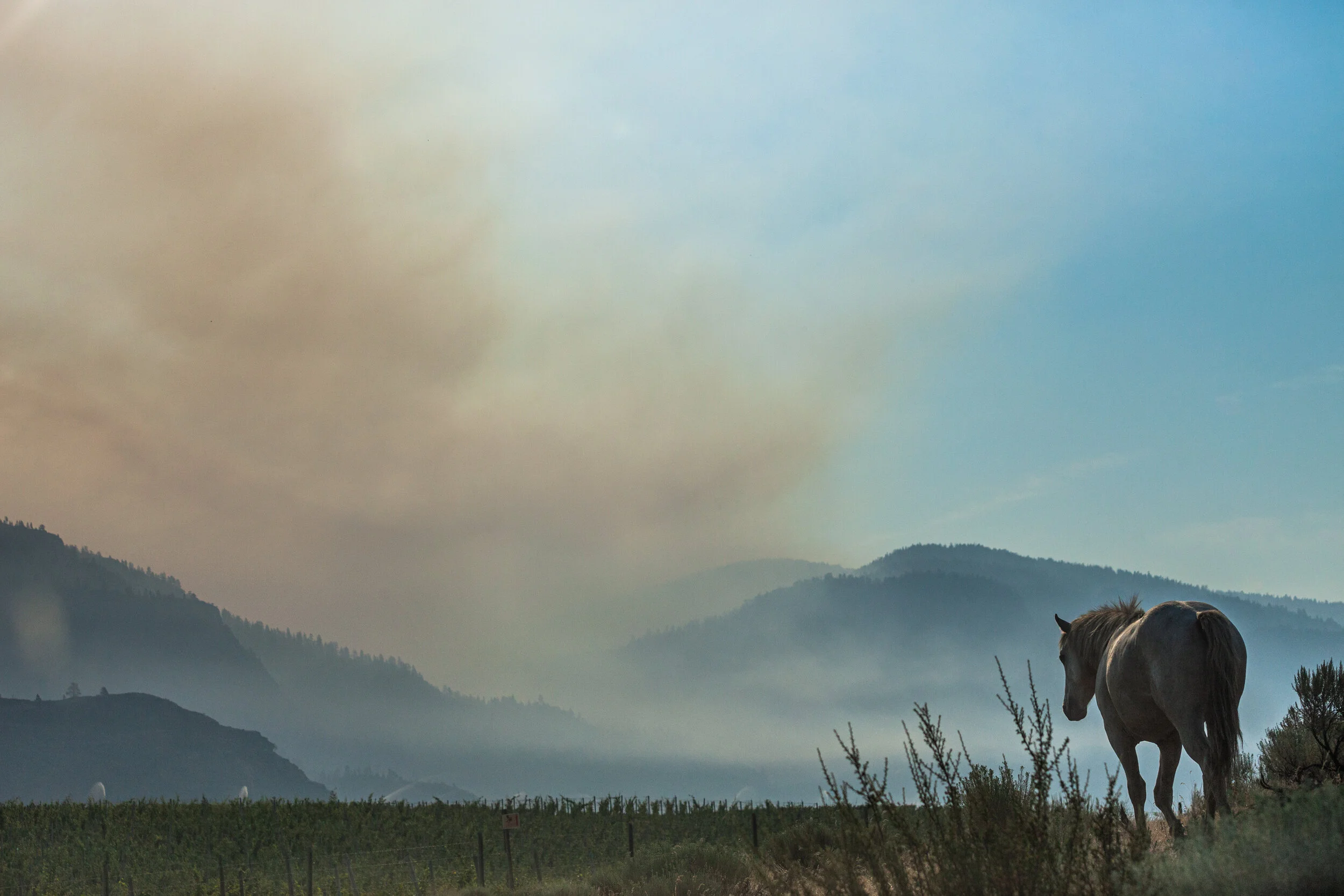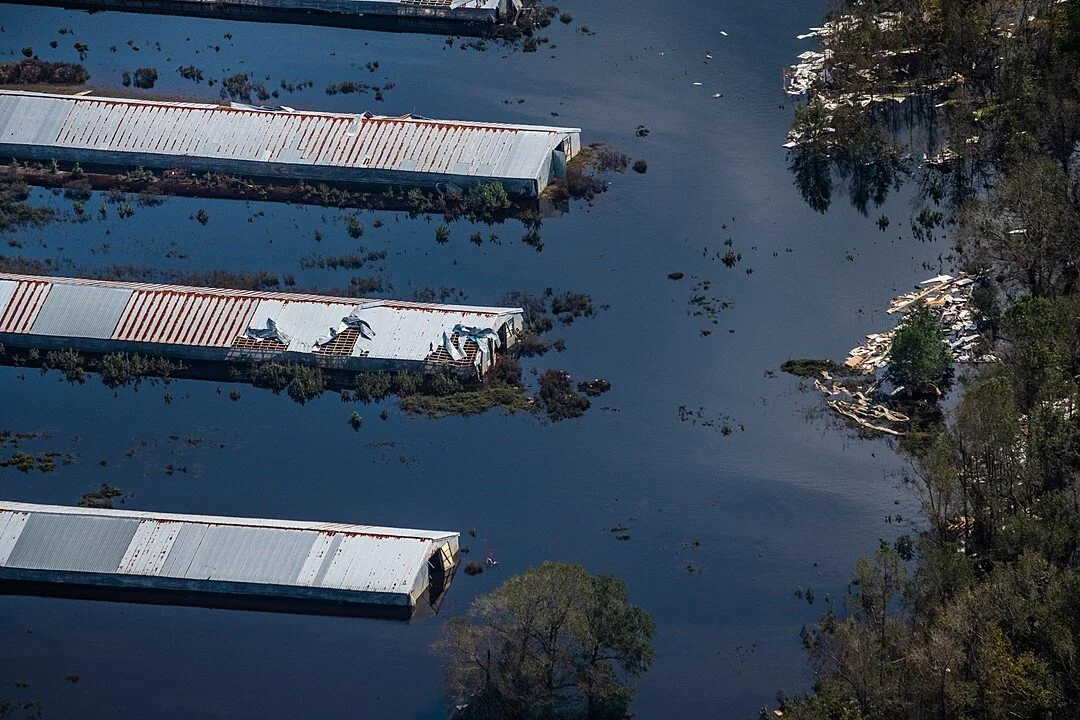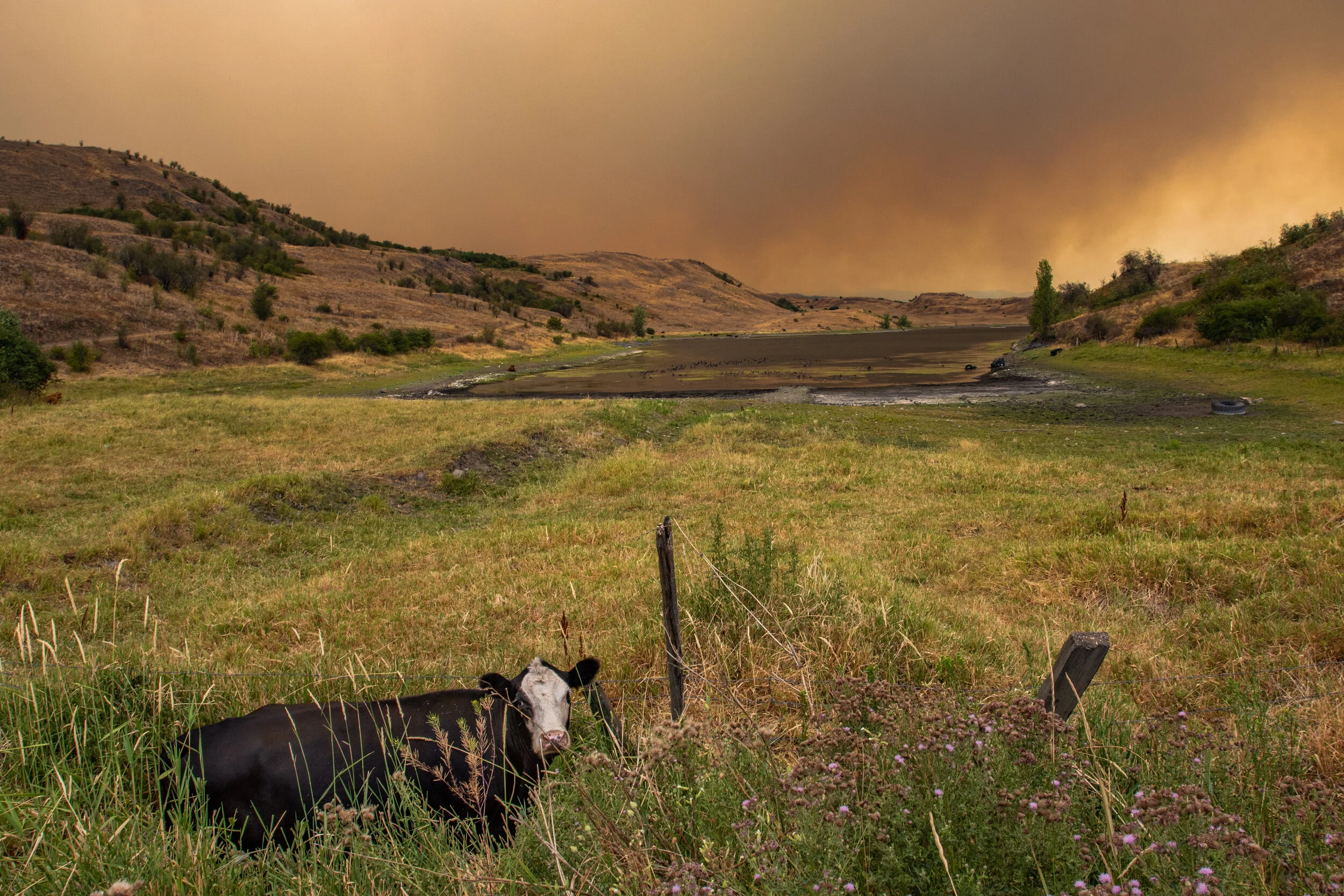By Jessica Scott-Reid
Jessica is a Canadian writer, animal advocate and plant-based food expert. Her work appears regularly in media across Canada and the US.
The effects of our warming planet are now impossible to ignore, as droughts, wildfires, floods and extreme heat impact our communities like never before. Whether seen in the headlines or in our own backyards, the climate crisis is wreaking havoc on the lives of humans across the globe. But what about the animals — wild and domesticated — who are also caught up in these disasters? Who is looking out for them and how are they helping? From relocating dogs out of the path of Canadian wildfires, to saving horses from German flood waters, to simply leaving bowls of water for overheated wildlife, animal lovers the world over are rescuing furry and feathered friends from falling victim to man-made climate chaos.
When wildfires began sweeping across large sections of Canada this summer, local animal rescuers in various regions sprang into action to save and relocate companion animals who could not be evacuated with their families. In the province of Manitoba, where fires threatened and continue to threaten various remote communities, circumstances meant that many companion animals had to be left behind.
Some of the areas also struggle with dog overpopulation, with many dogs living outdoors. Two groups, Manitoba Animal Alliance and K9 Advocates Manitoba, have been working tirelessly to send food and water to the dogs and cats left in these regions, and to find pets and fly them back to their families currently relocated in the city of Winnipeg. Manitoba Animal Alliance has been able to reunite a number of companion animals with their families, and K9 Advocates Manitoba has spayed and neutered over 50 dogs brought in from the evacuations.
On the other side of the world, companion animals, both stray and those left behind during evacuations, have also been rescued from climate-driven disasters. Deadly mudslides hit Japan in July, displacing many people and animals. Non-profit organization Kusunoki, quickly headed out to rescue dogs and cats, with volunteers slogging through the mud to bring animals into the safety of their own homes or to a central disaster relief shelter. As of last reporting, at the end of July, the group had rescued 80 animals.
Flooded factory farm. Photo: Jo-Anne McArthur/We Animals Media
Other domesticated animals also suffer when climate chaos hits. Farmed animals, often trapped in buildings or within fences, have no means of escape and nowhere to run when fires and flooding strike. A recent flood in China drowned over a million captive farmed animals. However, for a handful of equines in Germany impacted by unprecedented flooding last month, rescue came quickly. Sandra Bischoff of Cologne, along with her mother, daughter and friend, saved six horses from a flooded out stable in the Erft valley. The Tierrettung Essen animal rescue service also saved several ponies from a flooded field, as they waited terrified atop a small hill.
But perhaps the greatest suffering caused by climate change in action, is inflicted upon wildlife. Footage of rabbits and deer running for their lives through flames, and of marine animals cooking to death are heartbreaking. When a heatwave recently scorched the Pacific North West, wildlife rescuers reported a sudden influx of baby birds jumping from their nests too early, in an effort to escape the heat. Rescuers from Blue Mountain Wildlife told Reuters they had never seen anything like it. More than 100 baby birds were found, most alive but injured. Over a dozen had to be euthanized, while the rest will be returned to the wild once they have been rehabbed by rescuers.
The Wildlife Rescue Association of BC, offers tips for helping the wildlife in your area cope with extreme heat, including putting out clean water in shallow dishes and offering safe areas of shade.
To help prepare companion animals for sudden climate chaos, the Ontario SPCA suggests creating a pet emergency survival kit. The kit should include a three day supply of food and water, towels, a transport carrier, necessary medications, a photo of the animal in case they are lost and a list of local boarding facilities in case — as often happens — pets are not permitted shelter with their families.
Billowing smoke from a wildfire in British Columbia. Photo: We Animals Media
There is something the individual can do to lessen the frequency and impacts of major weather events on animals and humans and that is to reduce support of an industry that raises animals for food, and which also happens to be the second leading producer of greenhouse gases, and a top driver of ecological breakdown and biodiversity loss.
Animals of all kinds will continue to be innocent victims of human-caused eco-damage if drastic measures aren’t taken to curb the warming of the planet. Our actions not only impact people, but other sentient creatures with whom we share this home. While we may not all be animal rescuers, we all have the ability to help animals and ourselves, by making choices that are gentler on our environment and all of its inhabitants.



